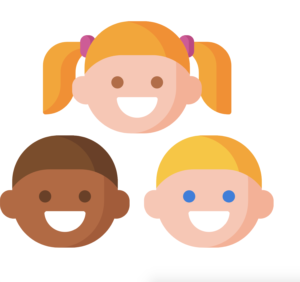What is it?
Dyslexia is a language-based disability that limits communication and language comprehension, making it difficult for people to accurately recognize, spell, and decode words (Definition Consensus Project, 2017).
Dyslexia is incredibly common and it affects thousands of children nationwide; while there is no known cause or cure for this disability, it does have a genetic component and it tends to disproportionately affect males (Dyslexia Basics 2020).
Dyslexia, while impacting the person’s ability to comprehend and use language, does not actually impact the person’s intelligence and, with intervention methods, people with dyslexia can reach normal levels of reading comprehension and communication.
Communication Skills
Children with dyslexia often struggle with communicating verbally because of their challenges with recalling the form and content of what they want to say.
-
-
Form: Children with dyslexia might have trouble recalling the words they want to say during verbal communication.
-
Content: Difficulty with phonological awareness and verbal short-term memory means that people with dyslexia might have the right intent behind the message they want to share with others, but they might not be able to recall the current word, which negatively impacts the actual content of their message.
People with dyslexia often have trouble finding the specific word they have to say in order to provide adequate context and meaning to their speech
-
Use: Children with dyslexia are not mainly impacted in this part of their communication.
-

Literacy Skills
Although dyslexia manifests itself differently in everyone who has it, people with dyslexia usually have an especially difficult time reading and writing.
This can show up in the classroom as…
- a dislike of reading
- the inability to read out loud
- being very slow to copy things down
- difficulty spelling
- Form: Syntax, Phonology, and Morphology
- Can’t form perfect sentences when writing, unable to sound things out when reading out loud
- Content: Vocabulary and Semantics
- unable to remember the correct word for something when writing, can’t always remember the meaning of words
- Use: Pragmatics
- reading comprehension, classroom writing skills

Intervention Opportunities
Intervention for Communications Skills
Intervention methods include early teaching of literacy and oral language.
-
Teach vocabulary through picture-naming tasks to help with tip-of-the-tongue syndrome.
-
Teach children with dyslexia how to use the vocabulary in different contexts.
-
Gamification: competitive scenarios that challenge the child to put in effort to increase their phonological skills.
-
the “GraphoGame” teaches children sound decoding
-
Computer-assisted instruction (CAI) helps raise phonological awareness in children with dyslexia
-
Intervention for Literacy Skills
There are many types of intervention methods that can better the child’s ability to read and write.
- reinforcing phonological awareness
- by practicing the sounds of letters and words to create a better understanding of the word
- knowing the spelling of words
- understanding syllables and syntax
- learning the morphology of written words
- quizzing the child on the content of stories to increase reading comprehension
- creating a mental picture of words and sentences to better understand the content
All of these tactics can help children with dyslexia comprehend and use written language better, although they are not complete fixes for the disability.
Focus Learning Video
More Information
Photo and Video Credits
